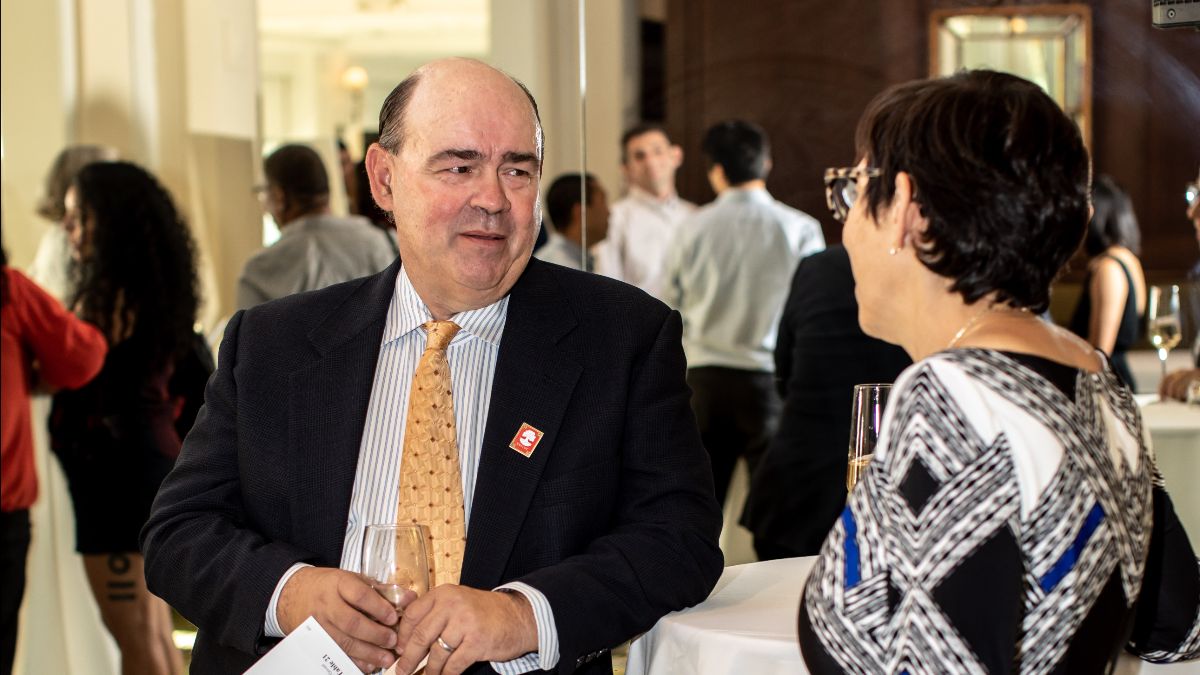Meet our Board: James Govert

10 years of Strategic Planning and Impact
Jim Govert has been on the EBALDC Board of Directors for the past ten years and has served as Secretary for the last eight years. During his tenure, he has watched EBALDC grow substantially in size and scope to take on challenges in housing development while incorporating the healthy neighborhoods approach.
 Jim is a legal and the real estate professional with nearly 30 years of national experience, from property acquisitions and sales and residential, office, and commercial leases to joint ventures and economic development agreements.
Jim is a legal and the real estate professional with nearly 30 years of national experience, from property acquisitions and sales and residential, office, and commercial leases to joint ventures and economic development agreements.
Before law school at UC Berkeley, Jim was a tenant organizer in the Bronx. He has remained committed to creating affordable housing and community development ever since, serving on various nonprofit boards in Pennsylvania, Michigan, and California.
As we bid him farewell and thank him for his generous and tremendous service, our team sat down with him for one final interview to capture his wisdom and final thoughts. Here is how it went down.
What first brought you to EBALDC?
You never know how your life will change when you move into a new home, and your neighbor happens to be a co-founder of EBALDC, Ted Dang. He soon learned about my real estate and legal background and recruited me. It’s been ten years of innovation and strategic planning by the EBALDC Board.
How did your professional experience in the real estate business inform your contributions and decisions made on behalf of EBALDC?
Based on my experience, two things made EBALDC stand out. First, the level of development expertise at EBALDC was on par with my most sophisticated clients. Second, the willingness of EBALDC to take risks and try to solve complex problems instead of just accepting the status quo.
What do you think you contributed to EBALDC, the organization, and, by extension, to the affordable/supportive housing industry?
Much of my contribution to EBALDC involved trying to match our Board and governance processes to the ever-changing development environment and the continued growth of EBALDC. Our strategic planning led to Healthy Neighborhoods convenings and new partnership opportunities. I’d like to think my efforts to streamline approvals and eliminate nonsensical bureaucratic requirements have made a dent here and there!
What advice do you have for new members joining the EBALDC Board?
Read your Board materials and ask questions. Recognize that nonprofit affordable housing development supporting healthy neighborhoods is a massive and complicated endeavor and that no meaningful successes come without taking risks.
What distinguishing elements set EBALDC apart from other affordable developers?
Three things: mission, innovation, and people. Our mission is broader than most affordable housing developers, who are primarily brick-and-mortar experts. Many builders do a great job at creating units in a very tough development environment. But EBALDC goes further, trying to bring together all of the elements that, in addition to safe and affordable housing, are necessary to make a neighborhood healthy. That commitment to serving residents and other community stakeholders as partners and facilitators makes EBALDC unique.
What are the most urgent issues in the affordable housing industry?
Community-based lenders and grant makers need to be willing to fund affordable housing developers who take risks and be flexible and creative. Too many folks supporting affordable housing use a model that looks like private, for-profit lending – that’s not right! We need more funders willing to be innovative and provide better options for how to fund projects and services. The complexity of the capital stack required to complete a standard affordable housing project is a significant hindrance – the industry needs to do better!
Any words of wisdom for your successors and emerging housing development professionals?
Any sort of housing development is hard. And then affordable housing development is harder since working on such projects means dealing with complexities and issues that do not impact private, for-profit builders. At EBALDC, we’ve increased the difficulty by going beyond bricks and mortar to create partnerships with other community stakeholders to improve the vibrancy, diversity, and health of our residents and commercial tenants and our entire neighborhood! EBALDC plays the game in the hardest possible settings.
What are the next steps for you?
My wife and I became empty nesters this year, with our youngest kids heading to college. I am going to spend more time on some family traveling adventures and sailing in the San Francisco Bay and elsewhere . . . and I’ll probably put in a few more hours at work since college tuition is not cheap! While taking a step back from the EBALDC Board, I will remain part of the community as an alumnus and continue to support you all. It has been an honor and a pleasure!
